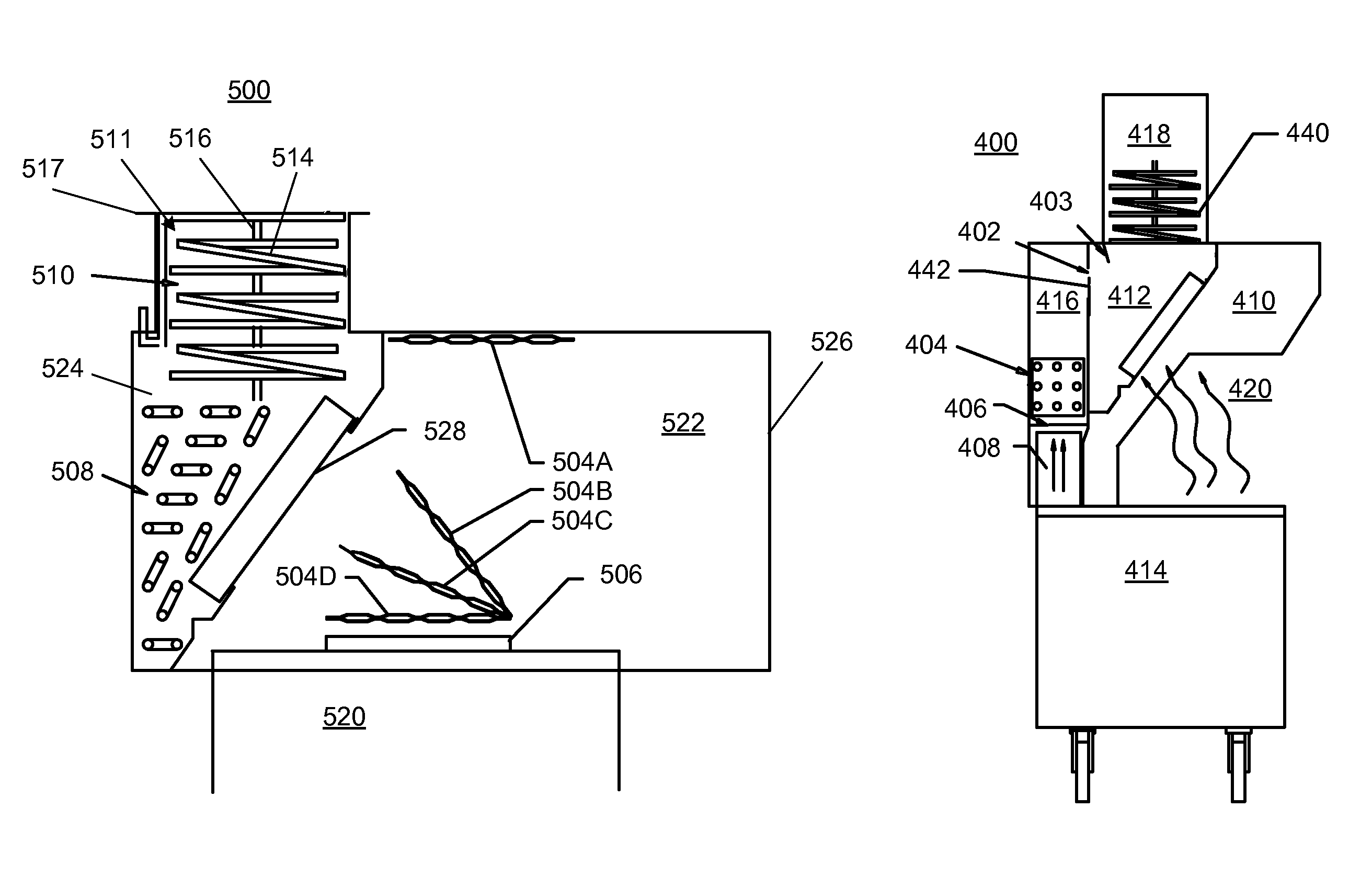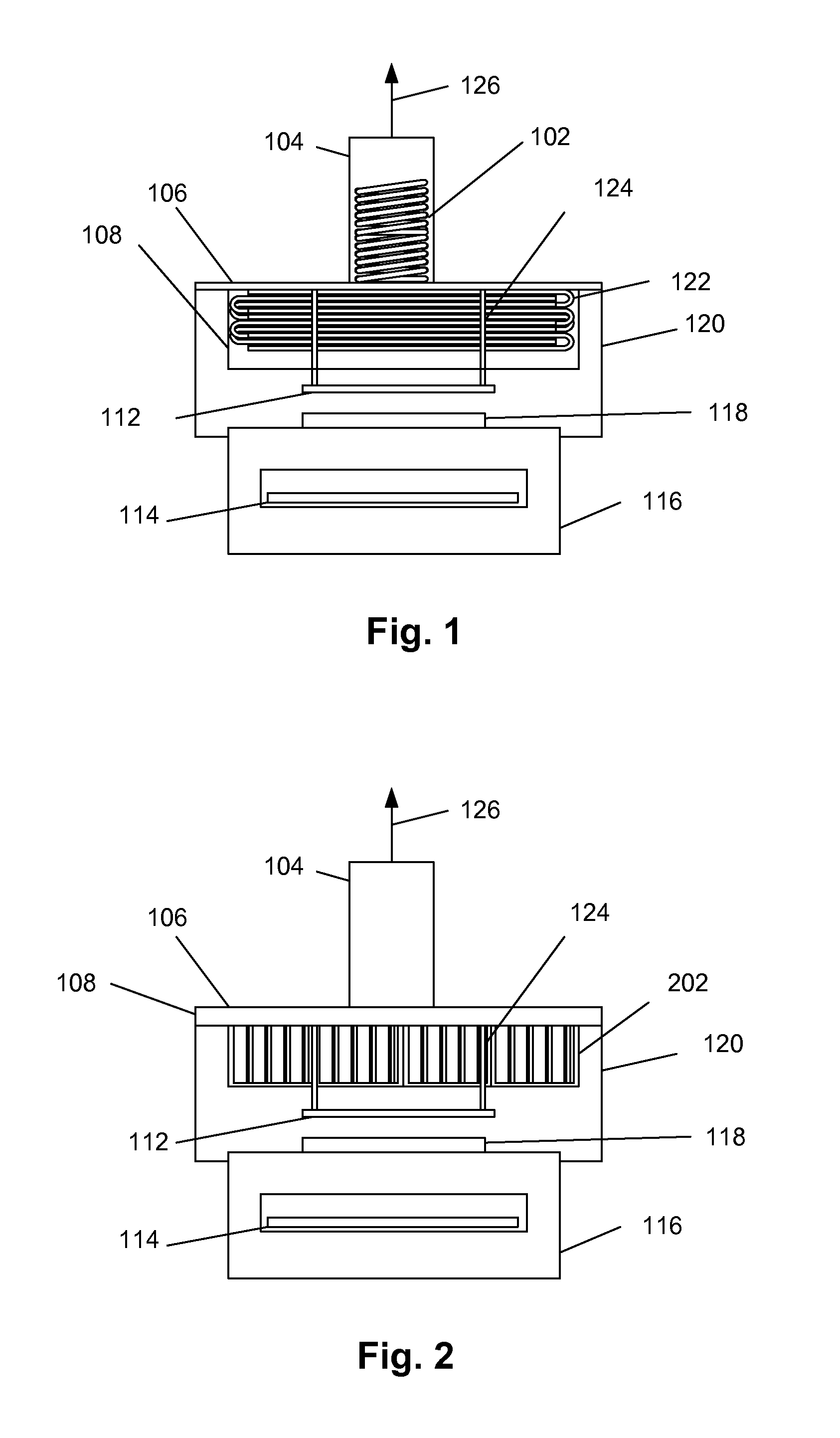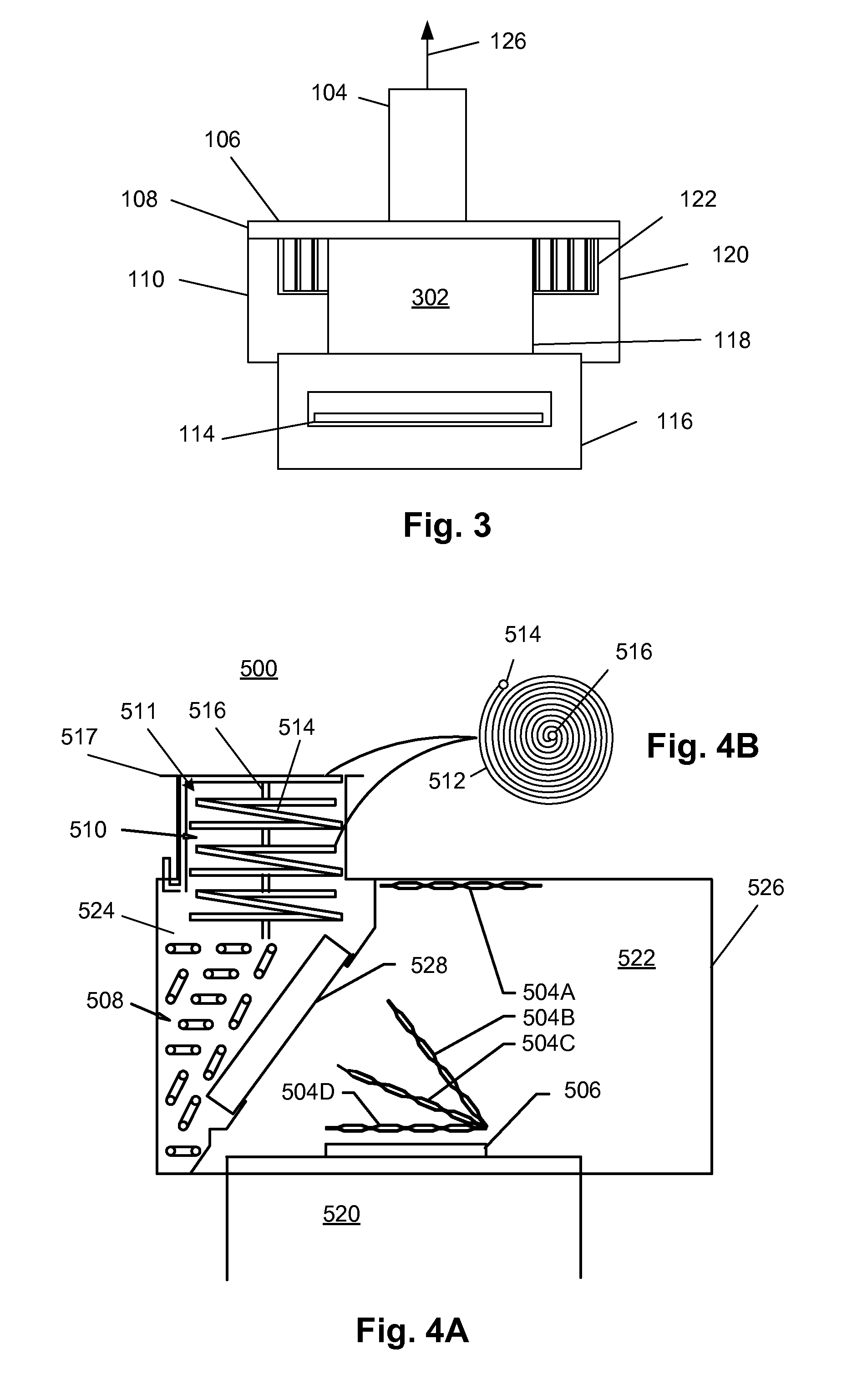Energy recovery devices, systems, and methods
a technology of energy recovery device and energy recovery method, which is applied in the direction of domestic stoves or ranges, heating types, lighting and heating apparatus, etc., can solve the problems of attempting to capture and reuse waste heat, generating large amounts of heat and grease in restaurants, and wasting energy. , to achieve the effect of reasonable efficiency and efficient control of energy recovery
- Summary
- Abstract
- Description
- Claims
- Application Information
AI Technical Summary
Benefits of technology
Problems solved by technology
Method used
Image
Examples
Embodiment Construction
[0047]FIGS. 1 to 3 show an energy or heat recovery device for a grill 116. The chain broiler 116 receives food onto a grill configured as a conveyor belt 114 that passes food over a source of heat, such as a gas burner or wood fire. Radiant and convective heat and flue products emanate from an exhaust opening 118 at the top of the grill 116.
[0048]Fumes from the exhaust opening 118 are captured by an exhaust hood 120. Fumes are drawn by an exhaust fan into a plenum 108 through grease filters 202 and removed through an exhaust duct 104 and a cooled product 126 ultimately discharged.
[0049]A flat heat exchanger panel 112 is arranged to capture radiant energy and, under certain conditions (if the temperature is lower than the exhaust products) convective heat, emanating through the exhaust opening 118. A bent tube heat exchanger 122 is located in the exhaust plenum 108 and captures heat convectively. The grease filters 202 serve to reduce the amount of fouling experienced by the heat exc...
PUM
 Login to View More
Login to View More Abstract
Description
Claims
Application Information
 Login to View More
Login to View More - R&D
- Intellectual Property
- Life Sciences
- Materials
- Tech Scout
- Unparalleled Data Quality
- Higher Quality Content
- 60% Fewer Hallucinations
Browse by: Latest US Patents, China's latest patents, Technical Efficacy Thesaurus, Application Domain, Technology Topic, Popular Technical Reports.
© 2025 PatSnap. All rights reserved.Legal|Privacy policy|Modern Slavery Act Transparency Statement|Sitemap|About US| Contact US: help@patsnap.com



